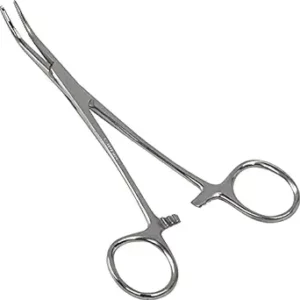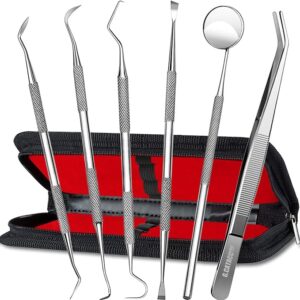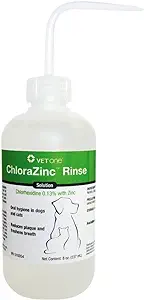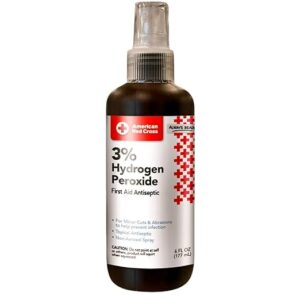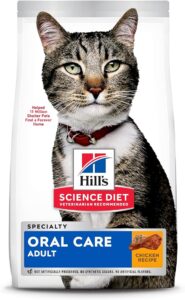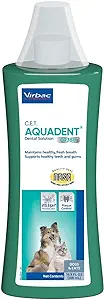What makes a cat to have a bad breath?
A cat can always have a breath that some people don’t like smelling. But in some cases, the smell can turn from mildly unpleasant to a huge stench. The cause why your cat has a bad breath is that for some reason more bacteria are created in the mouth. These bacteria can convert certain substances, especially proteins, that occur in the saliva or simply in the oral tissue into other substances. This creates sulphur-containing substances, which are the cause of your cat’s bad breath.
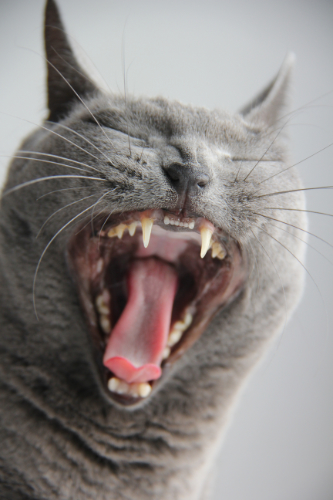
Causes for your cat to have a bad breath
Tartar
In most cases, the cause is that a cat has bad teeth. Every cat gets some plaque on its teeth while eating. That is normal. But if this is not cleaned properly, minerals can accumulate in this dental plaque. This makes it hard and it can no longer be brushed or rubbed away. In the course of his life, more and more tartar is formed. At some point, your cat will have so much tartar that his gums will become inflamed. There are many bacteria in the tartar, so a cat with tartar has a enormously bad breath as a result of the many bacteria it contains. But if inflammation also occurs in the gums, even more bacteria will grow in it. This makes the smell even worse.
Bad breath in a kitten
Even in the period when kittens are going to exchange their baby teeth, small inflammations often occur in the gums. And inflammations are therefore a good place to breed bacteria. In fact, we even talk of an infection at that time. During that period, your kitten can also start to have a bad breath. Again, because those bacteria produce smelly substances. However, this is often only for a short period of time. Kittens usually change their teeth between the ages of 3 and 6 months. After that, the smell should return to normal.
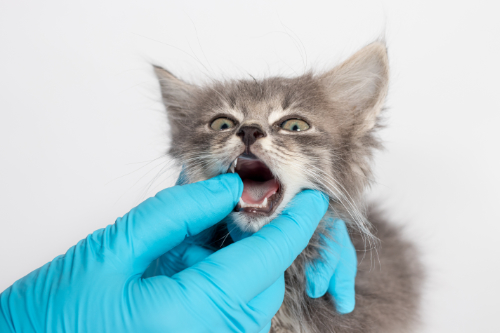
Organ problems
However, there are other reasons that a cat will have a bad breath. For example, a cat can also have a bad breath when there is a problem with its stomach. For example, when stomach acid rises from his stomach through the esophagus, it produces a bad breath. But a cat with kidney failure can also start to smell enormously. The reason in this case is that due to the poor functioning of the kidneys, there is an accumulation of body wastes. These waste products are therefore in an increased concentration in the saliva and mucous membrane. Bacteria also convert these substances into foul odors. Since kidney failure usually occurs in older cats and so does tartar, these two problems also reinforce each other. The result is a cat with a really, really bad breath!
Inflammation in mouth due to foreign objects
Cats are less bothered by it than dogs, but it also sometimes happens to cats that objects get stuck between their teeth. Or that they got a wound from an object. In particular, of course, we sometimes see bones of mice or birds. These wounds can become infected with the bacteria that normally already exist in the mouth. And in this case too, that larger amount of bacteria will make smelly substances, resulting in your cat to have a bad breath.
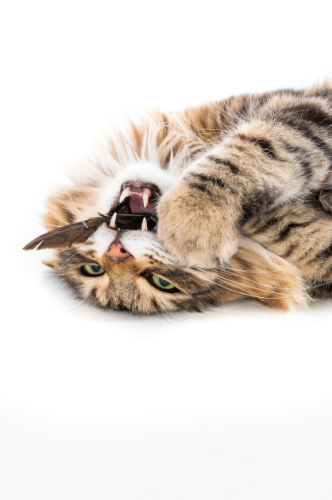
What should you do if your cat has a bad breath
Examine his oral cavity
First of all, it is wise to look in your cat’s mouth for any spots in his mouth that look inflamed. In that case, the pink mucous membrane (gum or tongue) has become bright red and sometimes a bit purulent. We see this often, especially around the molars.
In principle, the easiest way to do this is to have someone hold your cat while it is standing on a well-lit table. You yourself can then place your palm on your cat’s forehead and put your thumb and index finger behind his large fangs. Then you turn his head so that his nose points slightly towards the ceiling. Your cat will then loosen its lower jaw a bit. You can then open it further. Don’t do this too far because then your cat will work against it and you won’t see anything anymore. Just open it a little bit and peek inside yourself.
Look carefully if you see an object somewhere or a very red spot. If you have seen it well, you can then take a look at the side of his molars. To do this lift his lip back and upwards. You can then assess his molars and gums. Also push against the teeth and molars and see if they are not loose.
Do you see a loose tooth?
Loose teeth and molars must of course be pulled. If the tooth or molar is already 95% loose, you can grab the tooth or molar yourself with a pair of pliers and pull it out (see below for an example of pliers). This should be strait up or down the tooth. So don’t pull aside, otherwise you’ll break off the root. After the tooth has been removed, the wound should heal within a week. After that your cat should no longer have a bad breath.
If the tooth is still quite stuck, the tooth will have to be pulled by a vet. He or she will do that while your cat is under anesthesia. If tartar is the cause of the loose teeth, dental treatment will also take place immediately. And very often the vet notices even more loose teeth. These will most likely be pulled out as well.
Tartar
Don’t you see any loose teeth? But is there any tartar? Then you can buy a tartar scraper if your cat is of the cooperative type. With this tartar scraper you can scrape the brown tartar off the teeth. In that case, do not do the whole set of teeth at once, but do a tooth every week. Do the worst part first. You can read more information about tartar on the page about tartar.
Prevent bacterial growth
Do you think your cat has a bad breath, but you don’t see any major medical problems? In that case, you can prevent bacterial growth by treating your cat’s teeth with an antibacterial mouthwash. Vet One ChloraZinc is one of the better means for this. After each meal you can put this product over your cat’s teeth. It prevents the formation of dental plaque and kills bacteria in the mouth. The result is that your cat will have a considerably less bad breath.
Treat wounds
Do you clearly see a wound in your cat’s mouth, without tartar? Then it may be that the wound is infected and therefore cannot heal properly. To stimulate this wound healing, you can dab the wound 3 times a day with a cotton swab soaked in 3% hydrogen peroxide. You can do this for 7 days. The wound should then be healed because you treat the bacterial infection with hydrogen peroxide.
Foreign object
Do you see an object between the teeth? Then this is the cause of your cat’s bad breath. Try to gently remove the object. You can then treat the wound with hydrogen peroxide as stated above. If you cannot remove the object yourself, you will unfortunately have to take your cat to your vet.
In which case do you need to see a vet?
If your cat has a bad breath and you’ve noticed that he’s been drinking more water than you’re used to a few years ago, there’s a good chance he has kidney failure. In that case, it is best to have your vet take some blood from your cat so that a diagnosis can be made.
But even if you have seen that your cat has loose teeth or molars, he will have to go to a vet so that his teeth can be treated and he will no longer have pain. Because it’s bad that your cat has a bad breath, but that he’s in pain is even worse. Even if you don’t notice any abnormal behaviour in your cat, inflammation and loose teeth always hurt! Just like with you.
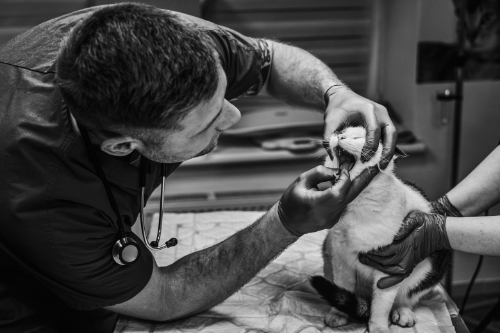
How to prevent your cat from having a bad breath?
Special cat food
Complete prevention of a bad breath is actually not possible. But by ensuring that his teeth are clean, the chance that your cat will have a bad breath is much smaller. You can keep his teeth clean with food that has been specially developed to prevent tartar formation in cats. These kibbles are also a lot larger, so that the gums are also well massaged while eating. Take Hill’s oral care kibble for example.
Drinking water additives
There are also drinking water additives that prevent the formation of tartar and bacteria. However, in this case, make sure that you start with a low dose and slowly add more and more to the drinking water. Cats are quite picky when it comes to flavours and they could just start drinking less. This can be counterproductive, especially for cats that have (early) kidney failure. So it is better not to use this remedy in older cats if you are not sure that his organs are working properly. It is no problem to give this to young cats, provided you gradually increase the dose in the water and your cat can get used to the taste. Just plan the adjustment for a month.
Good luck!
Hopefully you have found the solution for the bad breath in your cat in the article above. You and your cat deserve a fresh oral smell! Good luck!

